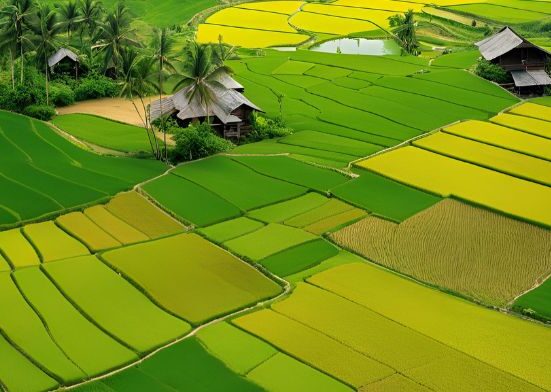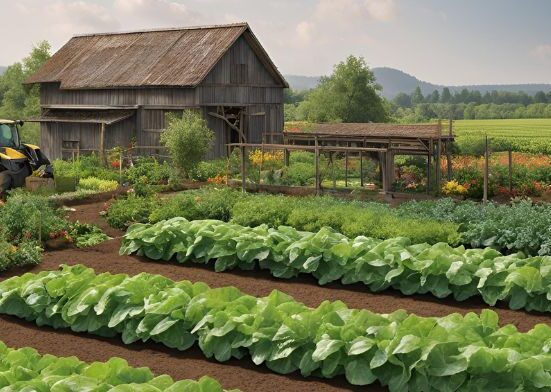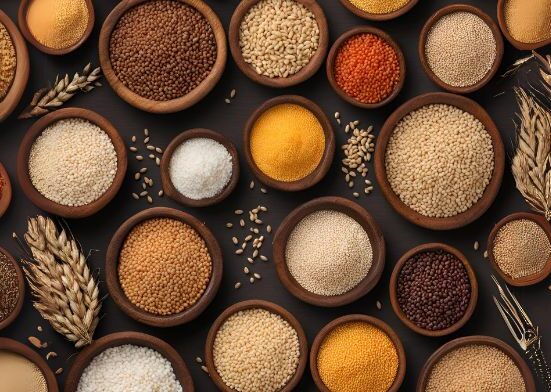Agriculture is the backbone of the global food supply chain. With an ever-growing global population and increased pressure on land and water resources, understanding how plants utilize water efficiently has become more critical. One of the central processes influencing plant water use in agriculture is transpiration. In this blog post, we will delve into the concept of transpiration, its importance in agriculture, how it relates to plant health, and how farmers can use this knowledge to optimize water usage and enhance crop productivity. By the end, you will understand why transpiration is not just a biological what is transpiration in agriculture curiosity but a vital factor for sustaining agricultural systems.
What is Transpiration?
Transpiration is the process by which plants absorb water from the soil through their roots, transport it through their stems, and eventually release water vapour through tiny openings in the leaves called stomata. While water is essential for plant growth, only a small fraction is used for development and metabolism. Most of the water is released back into the atmosphere as vapour. This vapour exchange is a crucial part of the water cycle and is integral to regulating plant temperature, nutrient uptake, and soil transpiration definition in plants health.
The Transpiration Process
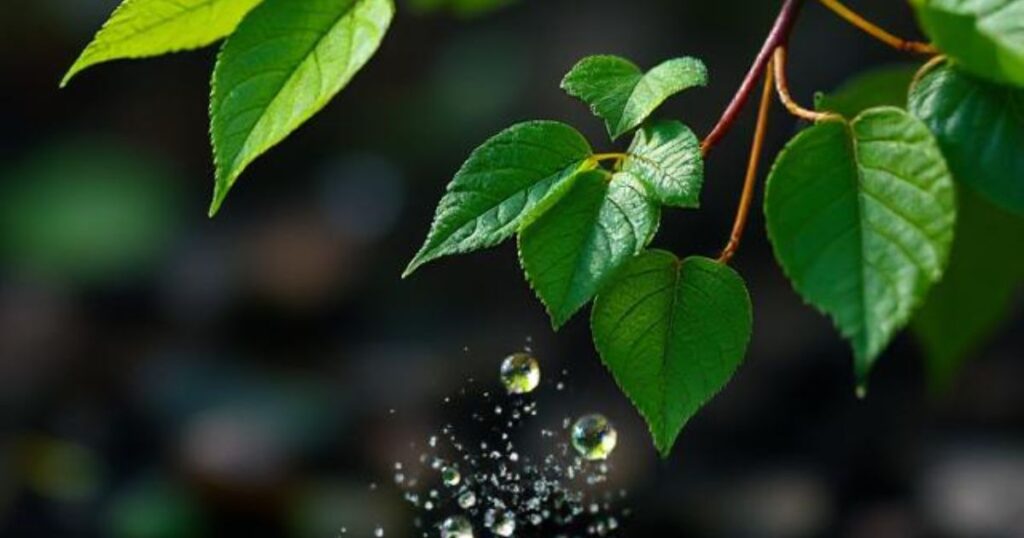
Transpiration is the process by which plant roots from the soil absorb water, move through the plant, and are released as water vapor through small openings called stomata on the leaves. This process is crucial in maintaining the plant’s water balance and facilitating nutrient uptake. Water moves from the roots, through the stem, and into the leaves, where it evaporates due to the heat from the sun. This water loss creates a negative pressure, pulling more water from the roots to replace the lost water, ensuring a constant flow. Transpiration also helps to regulate the plant’s temperature and maintains the flow of minerals from the soil. It is influenced by temperature, humidity, wind, and the plant’s water availability. Overall, transpiration is essential for plant health, growth, and functioning within the what is transportation ecosystem.
The Role of Stomata in Transpiration
Stomata are tiny pores primarily found on the leaves of plants, playing a crucial role in transpiration, the process by which water is lost as vapor from plant surfaces. Each stoma is surrounded by guard cells that regulate its opening and closing. During the day, stomata open to allow carbon dioxide intake for photosynthesis, simultaneously facilitating water vapor loss. This water loss creates a pull called the transpiration stream, which helps draw water and nutrients from the roots to other parts of the plant. Stomatal transpiration helps cool the plant and maintain moisture balance. Environmental factors like light, temperature, humidity, and wind influence stomatal activity. When water availability is low, stomata close to conserve water, reducing transpiration. However, prolonged closure can limit photosynthesis. Thus, stomata are key water loss and gas exchange regulators, ensuring plant survival and efficient physiological functioning.
Importance of Transpiration in Agriculture
Transpiration plays a vital role in agriculture by regulating plant temperature, maintaining nutrient uptake, and influencing crop productivity. This natural process involves the loss of water vapour from plant leaves, creating a suction force that facilitates the upward movement of water and essential nutrients from the roots to different plant parts. It helps cool plants, prevents overheating, and maintains, which is crucial for healthy growth.
Additionally, transpiration affects soil moisture levels, influencing irrigation strategies. Proper management of transpiration through mulching, shading, or controlled irrigation enhances water use efficiency, reducing water wastage in dry regions. It also impacts atmospheric humidity, affecting local climatic conditions and plant health. Understanding transpiration rates aids farmers in selecting drought-resistant crops and optimizing water resources. Balancing transpiration with water availability maximizes agricultural productivity, ensuring sustainable farming practices andwhat is transpiration in agriculture improved crop yields, especially in water-scarce areas.
Water Regulation and Plant Cooling
Transpiration has a cooling effect on plants. As water evaporates from the leaves, it carries away heat, preventing the plant from overheating. This is particularly important in regions with high temperatures, as transpiration helps maintain optimal crop-growing conditions.
Nutrient Uptake
Transpiration creates a continuous flow of water through the plant, which aids in the uptake of essential nutrients and minerals from the soil. Water moving through the plant helps dissolve nutrients in the soil, allowing the roots to absorb them. Without adequate transpiration, nutrient uptake would significantly reduce, leading to poor plant growth and diminished crop what is a transpairetion green magic homes yields?
Soil Health and Structure
Transpiration indirectly supports soil health by promoting water movement through the soil profile. As plants draw water, a vacuum encourages water to percolate into deeper soil layers. This process helps maintain soil aeration and prevents the soil from becoming compacted. Healthy soil is essential for maintaining crop productivity and resilience.
Atmospheric Balance
Transpiration plays a significant role in the water cycle by contributing to atmospheric moisture. As plants release water vapor, it eventually condenses to form clouds, leading to precipitation. This continuous cycle is vital for maintaining local climate patterns and water availability for agriculture. Understanding transpiration patterns can help farmers predict rainfall and optimize irrigation practices in dry or semi-arid what is transpirtaton regions.
Crop Growth and Yield
Healthy transpiration is directly related to crop growth and yield. Plants that transpire effectively are better able to access the water and nutrients needed for optimal growth. Insufficient transpiration due to water stress can stunt plant growth, reduce fruit production, and ultimately lower agricultural yields.
Factors Affecting Transpiration in Agriculture
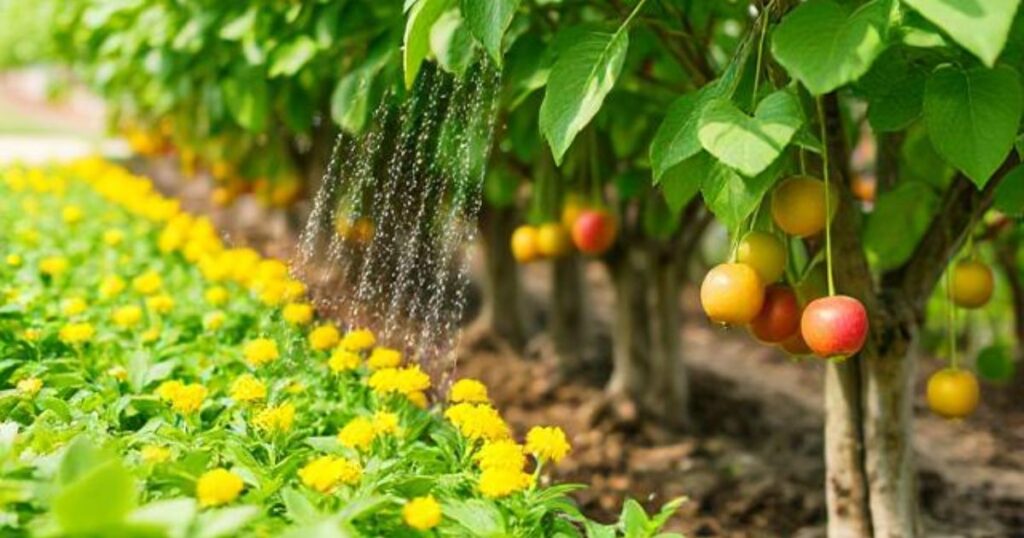 Transpiration is the process by which plants lose water vapour through stomata in their leaves. Several factors influence this process, impacting plant health and agricultural productivity. Environmental factors play a crucial role. Temperature increases transpiration as higher heat accelerates evaporation. Humidity has an inverse effect—low humidity promotes transpiration, while high humidity reduces it. Wind speed enhances transpiration by removing the moisture-laden air around leaves, maintaining a steep water potential gradient. Light intensity also boosts transpiration since stomata open more widely during photosynthesis.
Transpiration is the process by which plants lose water vapour through stomata in their leaves. Several factors influence this process, impacting plant health and agricultural productivity. Environmental factors play a crucial role. Temperature increases transpiration as higher heat accelerates evaporation. Humidity has an inverse effect—low humidity promotes transpiration, while high humidity reduces it. Wind speed enhances transpiration by removing the moisture-laden air around leaves, maintaining a steep water potential gradient. Light intensity also boosts transpiration since stomata open more widely during photosynthesis.
Plant-related factors include leaf structure, stomatal density, and root efficiency. Plants with wind speed increase transpiration by removing the moisture-laden air surrounding the leaves, which helps maintain a steep water potential gradient. Light intensity also plays a role in enhancing transpiration, as stomata open more widely during photosynthesis. Factors related to plants include leaf structure, stomatal density, and root efficiency. Plants with smaller leaves or thicker cuticles lose less water, while species with a higher stomata density transpire at more excellent rates. Deep-rooted plants can access more water, enabling them to sustain transpiration during dry periods.
Temperature
Temperature is one of the most significant factors influencing transpiration. Higher temperatures increase the stomata’s evaporation rate, leading to a higher transpiration rate. In hot conditions, plants may close their stomata to reduce water loss, limiting their ability to take carbon dioxide for photosynthesis. As such, extreme heat can cause a balance between water conservation and photosynthetic farm to table efficiency.
Humidity
Humidity refers to the amount of moisture in the air. When the air is dry, transpiration rates increase as the plant works to balance the moisture difference between the leaf and the surrounding atmosphere. Conversely, in highly humid environments, the transpiration rate is reduced because there is less moisture content difference between the leaf and the what is transpiration in agriculture air.
Wind
Wind can also affect transpiration by speeding up the process of water vapour removal from the leaf surface. Strong winds can increase the rate of evaporation, leading to higher transpiration. However, excessive wind may also cause the plant to lose water faster than it can absorb, resulting in dehydration.
Soil Moisture
The availability of water in the soil directly impacts transpiration. Plants require an adequate water supply for optimal transpiration, so insufficient soil moisture can limit the amount of water available for the plant to absorb. If the soil is dry, transpiration rates will Eco-Friendly Farming decrease, and plants may exhibit signs of stress, such as wilting or yellowing leaves.
Light Intensity
Light plays a crucial role in photosynthesis, which is closely linked to transpiration. The more light available, the more energy the plant has to open its stomata and carry out photosynthesis and transpiration. However, excessive light can also lead to excessive water loss if not appropriately balanced.
Plant Type and Growth Stage
Different plants exhibit varying transpiration rates based on their type, size, and growth stage. For instance, larger plants with more leaf area tend to transpire more water than smaller plants. Additionally, transpiration rates fluctuate throughout the growing season, with plants typically transpiring more during the peak growing stage when the leaf area is at its largest.
Managing Transpiration for Optimal Water Use in Agriculture
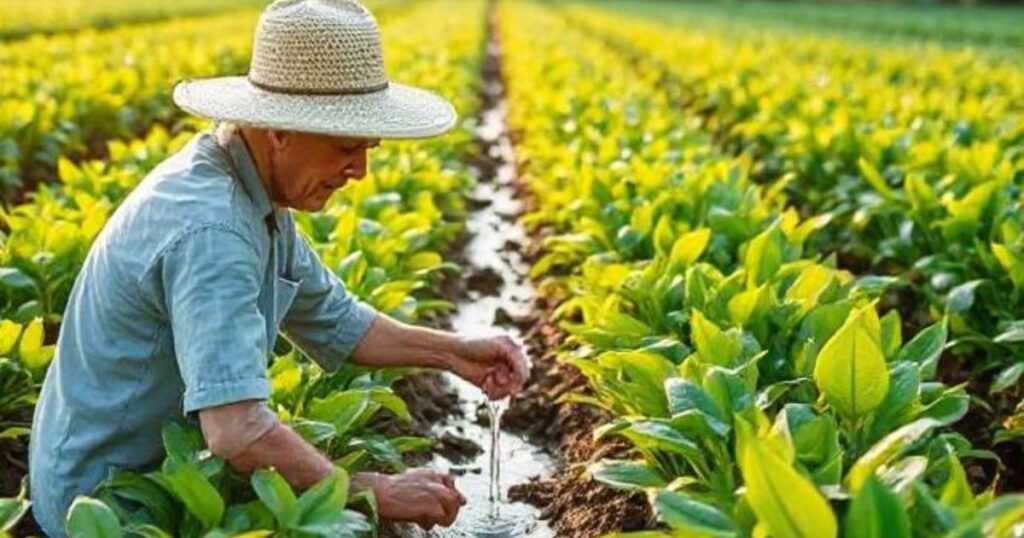 Transpiration, the process by which plants lose water through their leaves, plays a critical role in agricultural water management. Optimizing transpiration can improve water use efficiency, enhance crop yields, and ensure sustainability in water-scarce regions. Effective management strategies include selecting drought-resistant crop varieties, optimizing irrigation schedules, and utilizing soil moisture conservation techniques such as mulching and cover cropping. Advanced technologies like precision irrigation, sensor-based monitoring, and genetic modifications further regulate transpiration rates. Additionally, understanding the relationship between transpiration and photosynthesis allows farmers to balance water loss and plant productivity.
Transpiration, the process by which plants lose water through their leaves, plays a critical role in agricultural water management. Optimizing transpiration can improve water use efficiency, enhance crop yields, and ensure sustainability in water-scarce regions. Effective management strategies include selecting drought-resistant crop varieties, optimizing irrigation schedules, and utilizing soil moisture conservation techniques such as mulching and cover cropping. Advanced technologies like precision irrigation, sensor-based monitoring, and genetic modifications further regulate transpiration rates. Additionally, understanding the relationship between transpiration and photosynthesis allows farmers to balance water loss and plant productivity.
Climate factors such as temperature, humidity, and wind influence transpiration, making adaptive strategies essential. Farmers can minimize excessive water loss by implementing science-based approaches while maintaining crop health. Efficient transpiration management is key to sustainable agriculture, ensuring optimal water use and improved resilience to climate variability, ultimately securing global food production.
Efficient Irrigation Practices
Farmers can adopt efficient irrigation techniques such as drip irrigation or sprinkler systems that deliver water directly to the plant roots, ensuring the plant receives the water without excessive runoff. Efficient irrigation also helps reduce the risk of waterlogging, which can disrupt the plant’s ability to take up what is transpiration in agricultural nutrients.
Mulching and Ground Cover
Mulching around plants helps retain soil moisture by reducing water evaporation. It also minimizes the heat the soil absorbs, which can further decrease the transpiration rate. Organic mulches, like straw or leaves, can also improve soil health by adding nutrients and encouraging microbial activity.
Plant Selection
Selecting the correct crop type for specific environmental conditions can help optimize transpiration. Crops that are drought-tolerant or well-adapted to specific climates will require less water to thrive, reducing the risk of water stress during the growing season. Farmers can also opt for crop varieties with smaller leaves or thicker cuticles, which reduce water what is transpiration in agriculture loss.
Shade and Windbreaks
Using shade nets or planting windbreaks around crops can help regulate the microclimate and reduce the negative impacts of excessive heat and wind on transpiration. These strategies help maintain optimal temperature and humidity levels, promoting healthy transpiration rates and preventing water loss.
Monitoring Tools
Farmers can use weather stations, soil moisture sensors, and plant water potential meters to monitor environmental conditions and plant water status. With real-time data, farmers can make informed decisions on irrigation scheduling and adjust strategies based on plant needs rather than relying on guesswork.
Soil Health Management
Maintaining good soil health ensures the plant can access enough water. Practices like crop rotation, adding organic matter and reducing soil compaction help improve soil structure and water retention, supporting healthy transpiration rates throughout the growing what is transpiration in agriculture season.
The Future of Transpiration in Agriculture
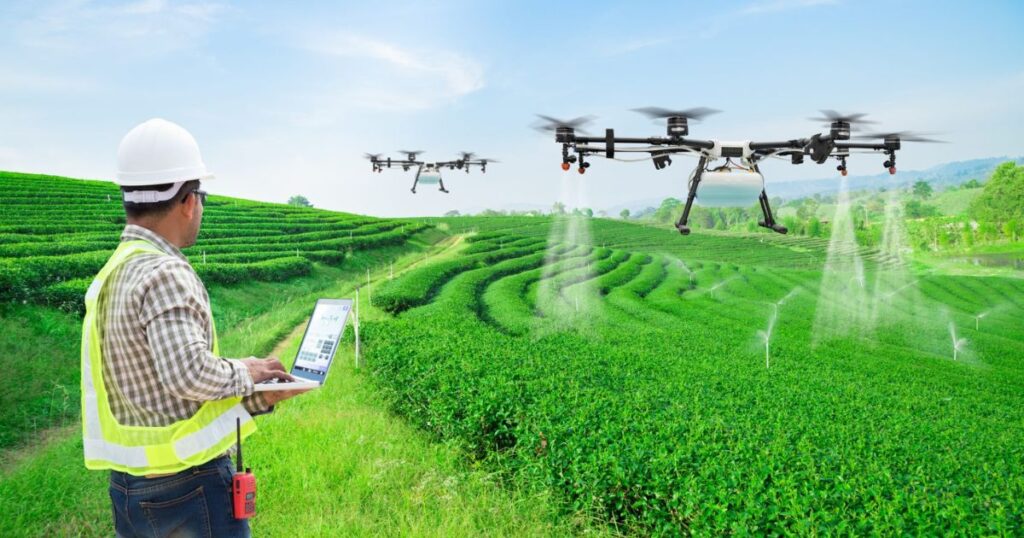 As climate change continues to affect global weather patterns, understanding and managing transpiration in agriculture will become even more essential. With rising temperatures and changing precipitation patterns, farmers must find innovative ways to conserve water, enhance plant resilience, and maintain sustainable production systems.
As climate change continues to affect global weather patterns, understanding and managing transpiration in agriculture will become even more essential. With rising temperatures and changing precipitation patterns, farmers must find innovative ways to conserve water, enhance plant resilience, and maintain sustainable production systems.
One promising approach is the development of drought-tolerant crop varieties through breeding and genetic engineering. These crops are designed to regulate transpiration more efficiently, allowing them to thrive in water-scarce environments. Furthermore, advances in precision agriculture and remote sensing technology provide farmers with better tools to monitor transpiration and other vital plant processes, leading to more efficient water use and improved crop yields.
Challenges and Future Perspectives
The evolving landscape of technology, science, and society presents challenges and opportunities. One major challenge is the rapid pace of technological advancements, which raises concerns about ethical implications, data security, and job displacement. Climate change and resource depletion also pose significant threats, requiring urgent and innovative solutions. Additionally, global health crises, economic instability, and geopolitical tensions continue to shape our world.
Looking ahead, the future offers promising perspectives. Breakthroughs in artificial intelligence, renewable energy, and medical research hold the potential to address critical global issues. Integrating sustainable practices, digital transformation, and interdisciplinary collaboration will drive progress. Education and skill development will be essential to adapt to changing job markets. While uncertainties remain, proactive policies, innovation, and global cooperation can help overcome challenges, paving the way for a more sustainable and inclusive future. Embracing change with resilience and foresight will be key to success.
Conclusion:
Transpiration is a fundamental process that is pivotal in agriculture, influencing water use, nutrient uptake, plant cooling, and overall crop health by understanding how transpiration works and the factors that affect it, farmers can make better decisions to optimize water use, improve soil health, and enhance crop productivity. As the challenges of water scarcity and climate change continue to grow, optimizing transpiration will be a key strategy in ensuring that agriculture remains sustainable, resilient, and able to feed a growing global population. By combining scientific knowledge with practical solutions, we can unlock the full potential of transpiration in agriculture and pave the way for a more sustainable what is transpiration in agriculture future.
FAQ:
What is Transpiration?
Transpiration is the process by which water moves from plant roots to leaves and evaporates into the atmosphere through small openings called stomata.
Why is Transpiration Essential in Agriculture?
Transpiration helps regulate plant temperature, facilitates nutrient transport, and maintains plant hydration. It also plays a crucial role in the water cycle and crop what is transpiration in agriculture productivity.
How does Transpiration Affect Crop Growth?
Efficient transpiration supports photosynthesis and nutrient distribution, leading to healthier crops. However, excessive transpiration can cause water loss and drought stress.
What Role Does Transpiration play in Irrigation Planning?
Understanding transpiration rates helps farmers schedule irrigation efficiently, preventing water wastage and ensuring crops receive adequate moisture.
How is Transpiration Measured in Agriculture?
Transpiration is measured using tools like lysimeters, porometers, and remote sensing technology to monitor plant water loss.



